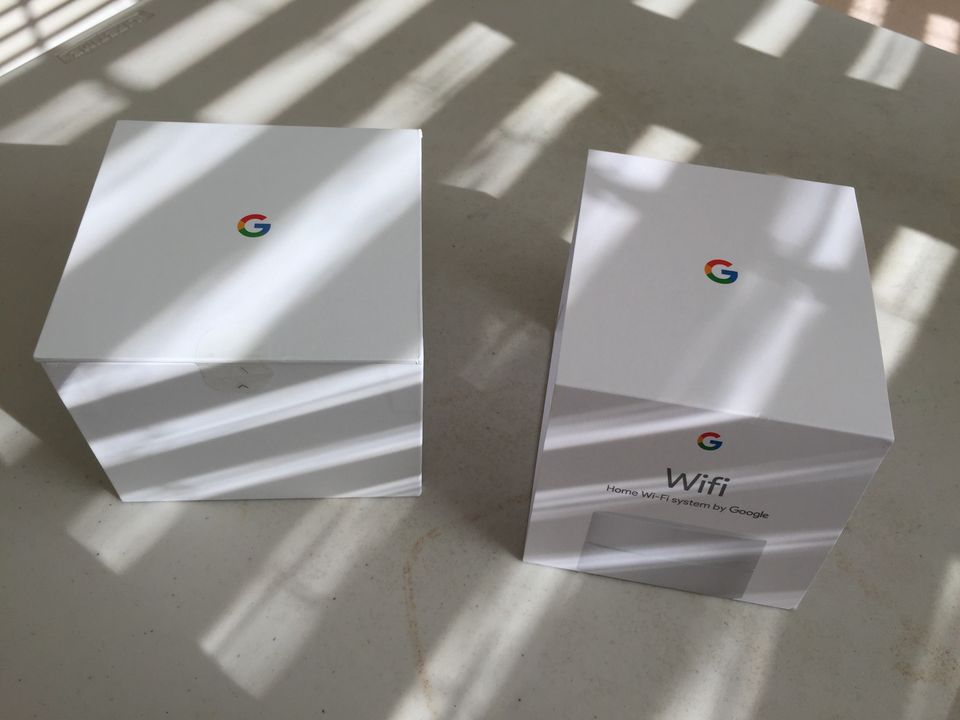Self-installation Activity

Consumer Service
In May 2021, I moved to a new house. During the past several months, we bought various new products and services. This new life ecology led to this independent research project. I collected data about my own experience of using products and services and reflected on the self-installation activity and consumer service from the perspectives of both a real consumer and an independent researcher.
I use the Ecological Observation method to guide this project. Below is a tiny insight I learned from the project.
Case Study: Google Wifi
I recently moved to a new house and I detached from an old environment and attached to a new environment. This brings me various opportunities of watching local services and find “bugs” in the life world. For example, we recently added Google Wifi to our house.


Great design!


The only bug is the text “Google Wifi” within this simple one piece of paper which is their self-installation guide.

I followed the guide and searched “Google Wifi” on the Apple Store. However, I couldn’t find it.



What’s the problem? They changed its name to “Google Home”.


This experience encouraged me to reflect on the following issues:
- How to design a good UX for the Self-Installation Activity?
- How do we manage the Paper-based Activity and the Bit-based activity?
- What kind of tech news should be considered common sense?
The Attachahce Perspective
The Attachance perspective emphasizes the value and meaning of the attaching acts and the detaching acts, especially the cross-boundary actions. Let’s use the Attachance perspective to reflect on the above Google Wifi example.
The diagram below is called Career API which describes three types of cognitive domains for career development.
- A: Agenda of the Times.
- P: Problems of Domain.
- I: Personal Issues.
The diagram is made with the Tripartness meta-diagram. The A (Agenda of the Times) is located in the “Organization — Community” zone, the P (Problems of Domain) is located in the “Person — Community” zone, and the I (Personal Issues) is located in the “Person — Organization” zone.

The purpose of the Career API is for discussing career development. If we define a Career as a broad concept including non-paid work such as writing this article, then we can use the Career API to discuss my Google Wifi experience.
- Personal Issues: I can’t find “Google Wifi” on the App Store.
- Problems of Domain: How to design the Self-installation Activity?
- Agenda of the Times: What kind of tech news should be considered common sense?
We should notice that the above three cognitive domains are located in three different zones. In one particular situation, I detached from one cognitive domain and attached to another cognitive domain. It also means I detached from the social role of “customer” and attached to another social role of “researcher”.
This is an example of Attachance.
From the perspective of the Ecological Practice approach, the above three cognitive domains are understood as Containers. Three are three types of containers:
- Physical Containers
- Social Containers
- Cognitive Containers
The real-life world is full of such containers. The above three cognitive domains are cognitive containers. The concept of Attachance can be applied to physical containers and social containers too. For example, the “agency — structure” debate is a major topic of social theories. We can understand the social structure as social containers.
The concept of Attachance is planned to develop as 1) an ecological practice concept for practice studies such as interaction design and startup innovation, and 2) a philosophical concept for developing a social theory. The book After Affordance only achieves the first goal and it focuses on the following acts:
- Attaching to an environment
- Detaching from an environment
- Attaching to an object
- Detaching from an object
I use the Attachance Perspective to refer to its philosophical meaning. To be honest, this task is a tough challenge. I have not developed a solution for discussing social containers yet.
Self-installation Activity as a Dangerous Container
Self-installation Activity is a dangerous container for many consumers, especially for high-tech products and services.

The above diagram is the basic model of the Ecological Practice approach. If we consider Self-installation Activity as a life container, then we can imagine the following situation:
- Attach: a product is shipped to a consumer's home. It is attached to the Self-installation Activity. The consumer attaches his/her mind to the Self-installation Activity too.
- Offers: there is only interaction between the consumer and the product. The "offers" are Instructions that are presented by text or videos.
- Acts: the consumer has to do the work to install the product without consumer service.
- Detach: the product is installed and the activity is done. The consumer moves to use the product for achieving his life goals.
For consumers, the Self-installation Activity requires rich knowledge about products, fast learning, attention to detail, hands-on skills, etc.
For designers, the Self-installation Activity requires attention too. It is the last step of delivering a great product. It's the first step of using a great product.
